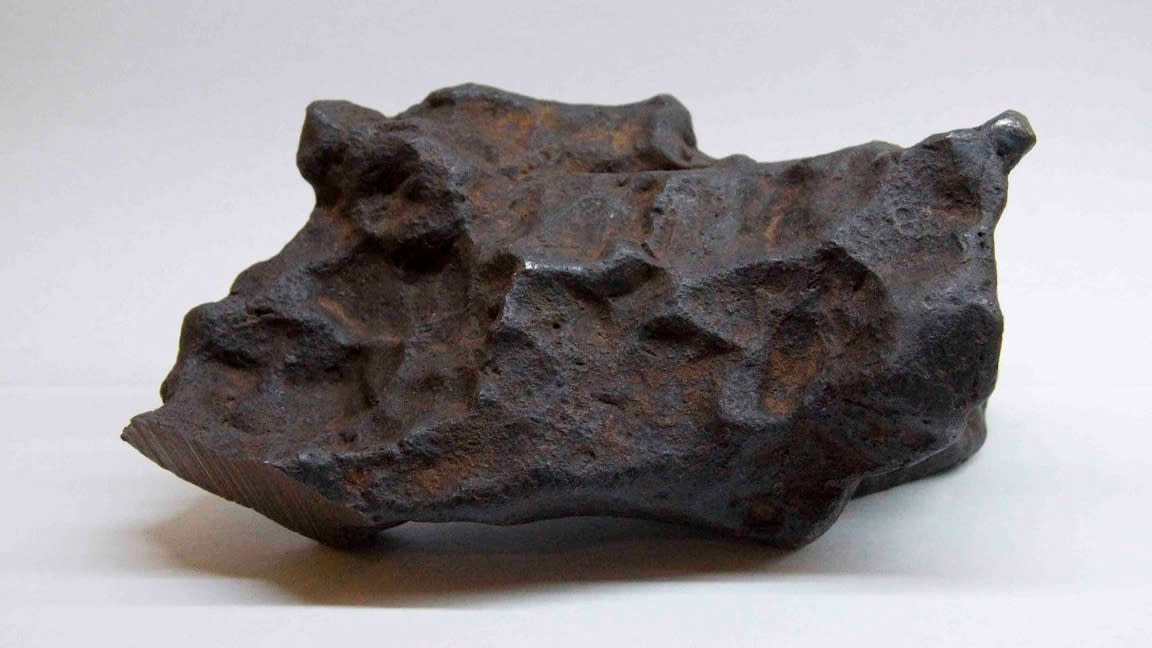The early solar system was donut-shaped, meteorite study suggests

You're probably familiar with how the solar system looks today. There are eight officially recognized planets located more or less on the same plane, orbiting the sun. But have you ever given a thought to what it looked like billions of years ago? Things were very different back then.
We used to think the early solar system looked a bit like a dartboard, with concentric rings of material orbiting our sun. But a team of researchers now suggests that the early solar system actually looked more like a donut. They've determined this from a rather unlikely source: iron meteorites.
Our solar system formed about 4.6 billion years ago, when a rotating cloud of dust and gas — the solar nebula — collapsed in on itself, forming the sun. But not all of that dust and gas became our star. The leftover material continued to spin around the sun in a chaotic mess, eventually condensing into planets and asteroids. This cosmic nursery is known as a protoplanetary disk.
While we can't physically look back in time at the formation of our solar system, we can see other examples of protoplanetary disks elsewhere in the universe, and many of them showcase those concentric circles of material. And we originally thought the solar system might've looked like that, too.
But the UCLA researchers found clues in iron meteorites that indicate otherwise. Iron meteorites come from metallic cores of ancient asteroids that formed in the early years of the solar system, so they can give us insight into how the solar system formed. What caught the researchers' attention were refractory metals like iridium and platinum, which were abundant in meteorites from the outer disk of the early solar system.
Related: Solar system planets, order and formation: A guide
That composition puzzled them. Those metals, which condense at high temperatures, should have formed closer to the sun, not in the cold reaches of the solar system. And if our solar system had a dartboard-like structure, these metals should not have been able to "jump" from ring to ring to end up in the outer disk. Thus, the researchers formed a new theory about the shape of the young solar system: It looked more like a donut, a shape that allowed refractory metals to move outward as the disk expanded.
But then they encountered another issue. The gravity of the sun should have pulled these heavier metals back toward it over the last few billion years — yet it didn't. However, the team came up with a possible solution for that, too.
RELATED STORIES:
— Iron meteorites point to millions of years of chaos in early solar system
— Rare iron meteorite could help reveal secrets of early solar system
— How many meteorites hit Earth every year?
"Once Jupiter formed, it very likely opened a physical gap that trapped the iridium and platinum metals in the outer disk and prevented them from falling into the sun," planetary scientist Bidong Zhang, first author of a new study about the meteorite analysis, said in a statement.
"These metals were later incorporated into asteroids that formed in the outer disk," added Zhang, who's a planetary scientist at the University of California, Los Angeles. "This explains why meteorites formed in the outer disk — carbonaceous chondrites and carbonaceous-type iron meteorites — have much higher iridium and platinum contents than their inner-disk peers."
And there you have it. Once upon a time, our solar system was a donut-shaped protoplanetary disk filled with heavy metal before slowly turning into the multiplanetary system it is today.
The study was published online May 28 in the journal Proceedings of the National Academy of Sciences.

